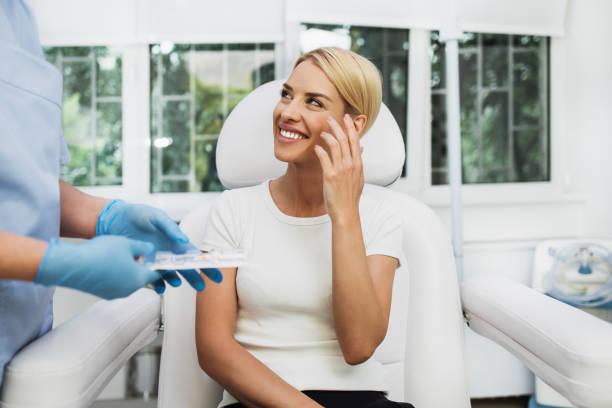
Is my business too small to need software?
January 26, 2022
Five ways software can free up your time to see more patients
February 23, 2022What consent do I need for aesthetic treatments?
In the world of medical aesthetics, getting the right consent for aesthetic treatments is not just a formality - it’s a legal and ethical requirement. Proper consent protects both your patients’ best interests and your business in the event of complications, complaints, or claims.
In this guide, we’ll break down the three key types of consent every aesthetics practitioner needs to understand and implement effectively.

Emma Carter • Feb 13, 2022
Treatment Consent for Aesthetic Procedures
Treatment consent is a cornerstone of patient care. To be valid, it must be:
-
Voluntary
-
Informed
-
Given by someone with the capacity to decide
If you’re the practitioner conducting the procedure, it’s your responsibility to discuss the treatment thoroughly with your patient and obtain their consent — this must not be delegated. Joint Council for Cosmetic Practitioners (JCCP) states:
“Clear, accurate information about the risks of any proposed treatment, presented in a way patients can understand, can help them make informed decisions.”
Your treatment consent process should include:
-
Any potential adverse reactions, side effects, and complications
-
Alternative treatment options (including no treatment)
-
Expected discomfort and pain levels
-
How long the results may last
-
Aftercare instructions
Think of consent as a two-stage process:
-
A discussion covering risks, benefits, and expectations.
-
A record of that discussion, including signed consent forms and practitioner notes.
Using Aesthetic Nurse Software allows you to collect secure digital consent signatures and attach clinical notes in one place – fully compliant with insurance requirements.
GDPR Consent for Patient Data
Under General Data Protection Regulation (GDPR), how you handle and store patient data is strictly regulated. As an aesthetics practitioner, you must obtain GDPR consent for two key purposes:
a) Storing Patient Data
Patients must explicitly consent to their personal information being stored. This consent should be clearly documented and stored securely.
b) Marketing Communications
If you plan to send promotional emails or texts, patients must opt in to receive them. Pre-ticked boxes or vague consent language are not compliant.
Failing to meet GDPR obligations can result in significant penalties – up to 4% of your annual turnover or £17.5 million.
With Aesthetic Nurse Software, you can securely store patient data, record GDPR consent, and maintain a clear audit trail for compliance.
Photo Consent for Sharing Patient Images
Before-and-after photos are essential for documenting results and supporting patient records. Consent to take and store these images should be part of the treatment consent process.
However, if you plan to use patient photos for marketing purposes (e.g., website, social media, or clinic brochures), you must obtain explicit photo consent.
Best practices for photo consent:
-
Use a separate form that clearly states how images will be used
-
Ensure patients know they can refuse without affecting treatment
-
Record the date and time consent was given
-
Make it easy to withdraw consent at any time
Aesthetic Nurse Software allows patients to withdraw consent with a single click, automatically logging the change and maintaining compliance with data protection law.
In Summary
Consent is a critical part of running an aesthetic clinic – protecting both your patients and your professional responsibilities (NMC, GMC, GDC).
By obtaining clear treatment consent, GDPR consent, and photo consent, you create a safer, more transparent experience for your patients.
With Aesthetic Nurse Software, you can store, track, and manage all consent types digitally, ensuring compliance and giving you more time to focus on patient care.
















